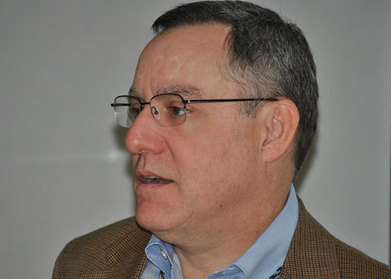Get Started for FREE
Sign up with Facebook Sign up with X
I don't have a Facebook or a X account

 Your new post is loading... Your new post is loading...
 Your new post is loading... Your new post is loading...

Billy R Bennett's curator insight,
November 29, 2012 11:55 PM
Our U.S. healthcare model is changing - and changing fast. This articles mainly focuses on recruiting but a few lines give a glimpse at how significant that change is becoming. Here are the drivers: Hospitals facing a growing shift from fee for service to performance based payments are realizing they need to redesign and build a well organized delivery system with the doctor as team leader and team player. Physicians - who were rarely great at managing a business - are bailing on private practice and choosing to do what they do best - practice medicine. The smart CEO is the one putting resources into redesigning the organization and its processes to support the meeting of these two strategic drivers. This will take time but hospital leaders can start today:
Start with picking a starting place- a "mini system" where you can focus on specific services and outcome areas. Pick an area where you can compete and have a good chance of becoming a game changer in your market if you get it right. Pull together organization design resources AND process improvement resources. Make sure they know how to involve everyone in this mini system - medical staff (nursing, physician assistants, etc) , administrative. This is not just a process change - it is not just "leaning and aligning" this is total system change. Get people excited and passionate about delivering real results. Get staff out to see great delivery examples. Drive learning and application from those visits. Start building a true shared vision among all of the people who will need to play in the system. Provide opportunities to bring ideas into the design our your new mini-system. The right physicians will get excited as well. Soon, recruiting becomes easy. Be Aggressive. If you build it, they will come. Don't worry if you do not have the medical staff yet. As this article implies they will come but you need something for them to come to. Hence the reason for starting with the model mini-system first. However, you must be aggressive. Mini-systems cannot stand on their own for long. To survive you must build out other services soon after. Remember ...This is not just a process change - it is not just "leaning and aligning" this is total system change. Billy Bennett is CEO of Pyramid ODI. Pyramid helps organizations build "great work and workplaces" |
|











Boeing has a big challenge ahead of it and a lot of egg to clean from its face regarding promises versus delivery.
Over the next 18 months Boeing expects to increase output across its commercial product lines by 25 percent while it manages no fewer than five development programs. Still smarting from the three years of delays to the 787 program, Boeing appears unwilling to risk any further loss of credibility, at least due to its own organizational shortcomings."
it is not easy getting the balance right when you try to maximize resources, minimize duplication, and keep hierarchy to a minimum. there is an ideal state - unfortunately it requires and ideal organization and ideal conditions. When was the last time you had that? Aviation is an industry that is constantly battling issues of control and security against empowerment and speed. The secret is to avoid the battle and to incorporate the objectives into the design and into the design of the implementation
Billy Bennett is CEO of Pyramid ODI. Pyramid helps organizations build "great work and workplaces"
www.pyramidodi.com